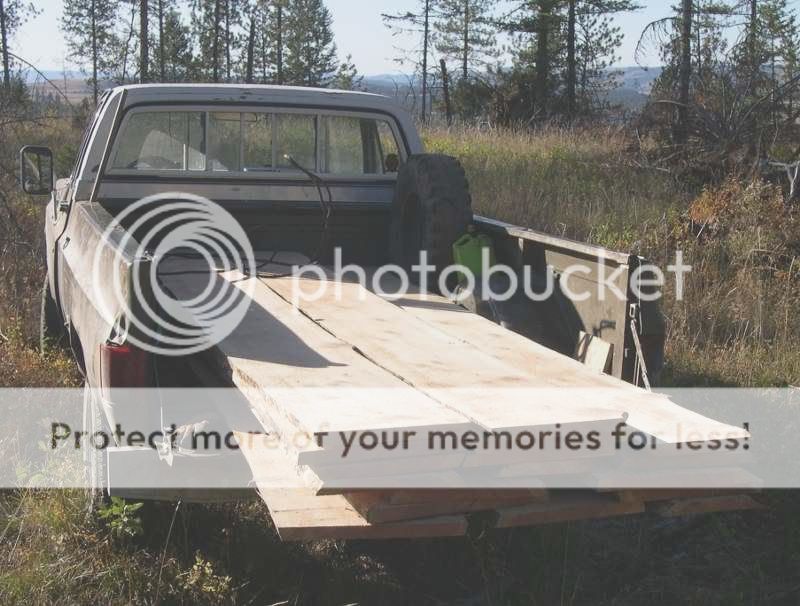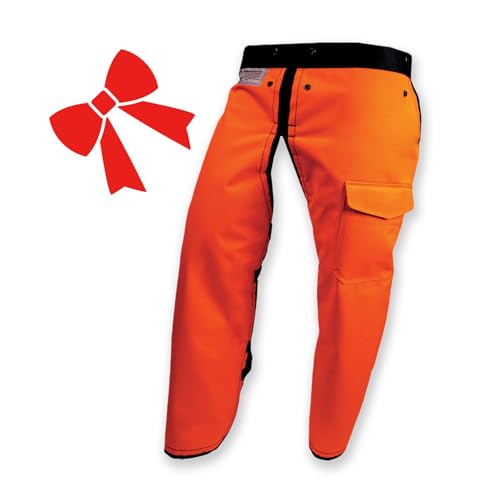mtngun
Addicted to ArboristSite
My usual routine that I have posted many times before -- CSMing blowdowns that would otherwise rot. I'll just highlight what was different about today.
First off, we have been discussing what limits CSM cutting speed, power or chain or both ? BobL asked for a pic of my chain, but as I feared, my aging camera was not up to the task. This is the only decent picture and it doesn't reveal any useful detail. Just so you know I tried.

Today's victim, a 22" doug fir. Knotty, but straight.

Log dogs. I have been dogsitting for a neighbor. To my surprise, the dogs behaved and didn't harass the elk that were bugling nearby.

Milling the 22" log with a 15 degree/FOP'd Bailey's ripping chain. At this width, I had to be pretty careful with the feed rate or else the 066BB would bog. The log yielded 9 boards, and by then, the chain cutting speed has slowed noticeably, so I switched to a NIB Bailey's ripping chain for the next log.

The next log (no pic) was 17" at the butt end, quite dry, and the sapwood was a little punky. The heartwood was still solid, though. Cuts through this smaller, drier, softer log were noticeably faster, and less fuel was used per board. Was it faster because the log was smaller, drier, and softer, or because of the brand new chain ? Well, the only way to answer that question is to do timed cuts on a cant. Too many variables otherwise.
The smaller log yielded 8 boards, giving me 17 boards total. Considering how I didn't start milling till around noon, and my previous record was 20 boards in a full day, I was happy with today's results.

All day long, I kept asking myself, "if the saw had more power, would it cut faster in this particular cut ?" "Which chain cuts faster, 15 deg/FOP or 10 deg/standard raker ?" "Which chain bogs easier ?"
In theory, the 15 deg/FOP should be more aggressive, and that's why I switched to it a while back.........but considering how my saw bogs easily, more aggressive may not be a good thing. Maybe my saw would maintain RPM's better with a less aggressive chain ? There is a lot to be said for keeping the RPM's in the saw's powerband.
Without timed comparisons on a cant, it's just speculation.
I will say that, if I had been milling blindfolded, I would not have been able to tell any difference between the two chains. If there is a difference, it is small.
Regarding how much the chain "bites", I can easily manipulate the size of the chips by how hard and fast I push the mill. Babying the feed produces flour-like sawdust. A firm push yields chips up to 1/4" diameter, at least for a split second until the saw bogs. That gives the impression that the chain is capable of taking bigger bites, if only the saw could keep the revs up.
Today's mechanical problems: The muffler cover bolts rattled loose, despite blue loctite. Yet another crack developed in the DP muffler cover. The muffler cover is fatigued and new cracks appear after every milling session. It has been welded several times. The "066" badge rattled off.
Milling is hard on a saw, Anything that can crack, rattle loose, fall off, or wear out, will do so.
First off, we have been discussing what limits CSM cutting speed, power or chain or both ? BobL asked for a pic of my chain, but as I feared, my aging camera was not up to the task. This is the only decent picture and it doesn't reveal any useful detail. Just so you know I tried.

Today's victim, a 22" doug fir. Knotty, but straight.

Log dogs. I have been dogsitting for a neighbor. To my surprise, the dogs behaved and didn't harass the elk that were bugling nearby.

Milling the 22" log with a 15 degree/FOP'd Bailey's ripping chain. At this width, I had to be pretty careful with the feed rate or else the 066BB would bog. The log yielded 9 boards, and by then, the chain cutting speed has slowed noticeably, so I switched to a NIB Bailey's ripping chain for the next log.

The next log (no pic) was 17" at the butt end, quite dry, and the sapwood was a little punky. The heartwood was still solid, though. Cuts through this smaller, drier, softer log were noticeably faster, and less fuel was used per board. Was it faster because the log was smaller, drier, and softer, or because of the brand new chain ? Well, the only way to answer that question is to do timed cuts on a cant. Too many variables otherwise.
The smaller log yielded 8 boards, giving me 17 boards total. Considering how I didn't start milling till around noon, and my previous record was 20 boards in a full day, I was happy with today's results.

All day long, I kept asking myself, "if the saw had more power, would it cut faster in this particular cut ?" "Which chain cuts faster, 15 deg/FOP or 10 deg/standard raker ?" "Which chain bogs easier ?"
In theory, the 15 deg/FOP should be more aggressive, and that's why I switched to it a while back.........but considering how my saw bogs easily, more aggressive may not be a good thing. Maybe my saw would maintain RPM's better with a less aggressive chain ? There is a lot to be said for keeping the RPM's in the saw's powerband.
Without timed comparisons on a cant, it's just speculation.
I will say that, if I had been milling blindfolded, I would not have been able to tell any difference between the two chains. If there is a difference, it is small.
Regarding how much the chain "bites", I can easily manipulate the size of the chips by how hard and fast I push the mill. Babying the feed produces flour-like sawdust. A firm push yields chips up to 1/4" diameter, at least for a split second until the saw bogs. That gives the impression that the chain is capable of taking bigger bites, if only the saw could keep the revs up.
Today's mechanical problems: The muffler cover bolts rattled loose, despite blue loctite. Yet another crack developed in the DP muffler cover. The muffler cover is fatigued and new cracks appear after every milling session. It has been welded several times. The "066" badge rattled off.
Milling is hard on a saw, Anything that can crack, rattle loose, fall off, or wear out, will do so.
Last edited:

























































